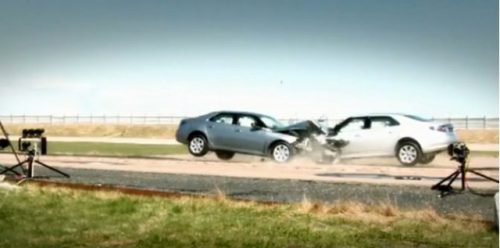Trauma activation criteria generally fall into four broad categories: physiology, anatomy, mechanism of injury, and co-factors. Of these, the first two are the best predictors of patients who actually need to be assessed by the full trauma team. Many trauma centers include a number of mechanistic criteria, usually much to their chagrin. They typically end up with frequent team activations and the patient usually ends up have trivial injuries.
However, there are some mechanisms that just seem like they demand additional attention. Death of another occupant in the vehicle. Fall from a significant height. But what about a patient who has been strangled?
Unfortunately, the published literature gives us little guidance. This usually means that trauma centers will then just do what seems to “make sense.” And unfortunately, this frequently results in significant overtriage, with many patients going home from the emergency department.
Since there is little to know research to show us the way, I’d like to share my thoughts:
- As a guiding principle, the trauma team should be activated when the patient will derive significant benefit from it. And the benefit that the team really provides is speed. The team approach results in quicker diagnosis from physical exam and FAST. It gets patients to diagnostic imaging quicker, if appropriate. And gets them to the OR faster when it’s not appropriate to go to CT.
- Activating for a strangulation mechanism alone is probably a waste of time.
- Look at the patient’s physiology first. Are the vital signs normal? What is the GCS? If either are abnormal, activate.
- Then check out the anatomy. If the patient has any voice changes, or has obvious discoloration from bruising, crepitus, or subcutaneous emphysema, call the team. They may suffer a deteriorating airway at any moment.
If physiologic and anatomic findings don’t trigger an activation, then standard evaluation is in order. Here are some things to think about:
- A complete physical exam is mandatory. This not only includes the neck, but the rest of the body. Strangulation is a common injury from domestic violence, and other injuries are frequently present.
- If there are any marks on the neck, CT evaluation is required. This includes soft tissue, CT angiography, and cervical spine evaluation. All three can be done with a single contrast-enhanced scan. The incidence of spine injury is extremely low with strangulation, but the spine images are part of the set anyway.
- CT of the chest is never indicated. There is no possibility of aortic injury with this mechanism, and all the other stuff will show up on the chest x-ray, if significant enough for treatment.
- Even if there are no abnormalities, your patient may need admission while social services arranges a safe place for their discharge. Don’t forget the social and forensic aspects of this injury. Law enforcement may need photographic evidence or statements from the patient so this event can’t happen again.
Next post: Trauma Activation for Hanging: Yes or No?
Reference: Strangulation forensic examination: best practice for health care providers. Adv Emerg Nurs J 35(4):314-327, 2013.


